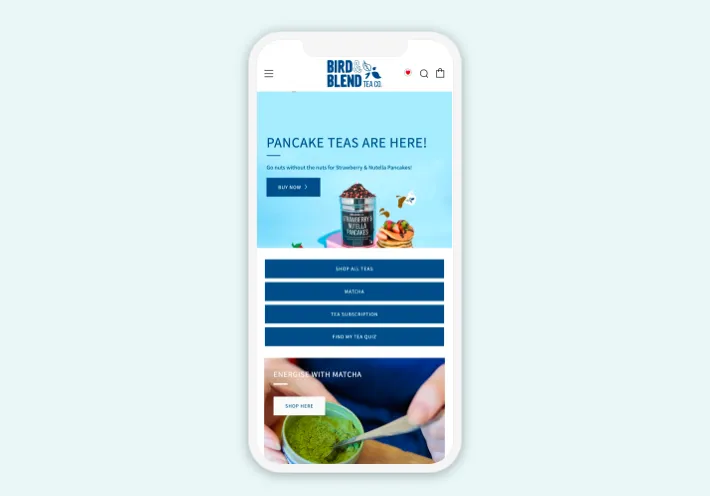
The Ultimate Guide to Mobile Optimization: Approaches for Enhancing Site Performance on Smartphones and Tablets
In a digitally-driven era where mobile phones have become the primary ways of accessing the internet, the importance of maximizing web sites for smart devices and tablet computers can not be overstated. As customers increasingly rely upon their portable devices to surf, store, and engage with on the internet material, services must adjust to fulfill the evolving demands of their audience. The approaches for improving site performance on mobile systems exceed plain adaptation; they include an extensive strategy that includes responsive layout, speed optimization, material techniques, and user experience improvements. By delving right into the details of mobile optimization, services can not just meet individual expectations but also remain ahead in an affordable digital landscape.
Value of Mobile Optimization
Mobile optimization plays an essential duty in improving individual experience and driving conversion rates in the ever-evolving digital landscape. With the enhancing use of smartphones and tablets for browsing the net, ensuring that internet sites are maximized for smart phones has actually ended up being crucial for services - Mobile Optimization. A mobile-optimized internet site not just adjusts seamlessly to various display dimensions but additionally tons swiftly, providing individuals with a smooth and delightful browsing experience
In today's hectic globe, customers anticipate immediate access to information on the go. A website that is not enhanced for mobile phones risks shedding potential consumers because of slow down filling times or an inadequate interface. By investing in mobile optimization, services can deal with the requirements of their mobile target market, causing higher interaction and raised conversions.
Additionally, internet search engine like Google prioritize mobile-friendly web sites in their positions, making mobile optimization vital for improving exposure and bring in organic traffic. Mobile Optimization. Overall, the importance of mobile optimization can not be overemphasized, as it straight influences individual fulfillment, conversion rates, and general organization success in the digital realm
Responsive Style Methods
Implementing responsive design techniques guarantees that sites dynamically change their layout and content based on the user's gadget screen dimension, offering a constant customer experience across numerous systems. One of the most usual methods used in receptive layout is developing fluid grids that enable content to resize proportionally to the display dimension. This makes certain that elements on the website keep their family member spacing and plan, optimizing the watching experience for customers on various devices.
Additionally, utilizing adaptable images that can scale with the size of the viewport aids protect against images from being cropped or misshaped on smaller sized screens. CSS media queries play a critical function in receptive style by enabling developers to use details styles based on the gadget attributes such as screen width, height, and alignment. By leveraging media inquiries, websites can adjust their format and layout useful reference to match mobile phones, tablets, and desktop computer displays effortlessly.
Incorporating responsive design methods not just enhances individual experience but also contributes to enhanced online search engine positions, as internet search engine like Google focus on mobile-friendly internet sites in their mobile search engine result. By welcoming receptive style, internet sites can accommodate the varied demands of users accessing web content on a variety of tools, inevitably driving interaction and conversions.
Speed and Efficiency Optimization

One key strategy is enhancing images and multimedia web content to decrease documents dimensions without compromising quality. Pressing photos, leveraging contemporary image formats like WebP, and careless packing offscreen pictures work techniques to speed up lots times (Mobile Optimization). Decreasing HTTP more info here requests, leveraging internet browser caching, and minimizing server reaction times are important steps in boosting efficiency.
Implementing a content delivery network (CDN) can additionally significantly increase website rate by distributing web content across several servers internationally, decreasing latency for individuals accessing the site from various places. Prioritizing essential above-the-fold web content and postponing non-essential manuscripts can better boost regarded performance. By concentrating on speed and efficiency optimization, websites can provide a smooth and satisfying individual experience on smart phones.
Mobile-Friendly Web Content Techniques
To enhance web content for mobile devices, it is necessary to focus on readability and involvement via tactical formatting and succinct Click Here messaging. Mobile-friendly web content techniques include customizing the presentation of info to match the smaller screens and on-the-go nature of smartphone and tablet computer users. One key aspect is to ensure that text is quickly legible without the requirement for focusing, using font dimensions that are legible on mobile screens. Additionally, breaking up material right into shorter paragraphs and utilizing bullet points can help enhance readability and make it less complicated for users to take in details quickly.
Including interesting visuals, such as photos and video clips optimized for mobile viewing, can additionally boost the overall user experience. These visuals should be relevant, top quality, and lots promptly to stop individuals from wearying. Additionally, integrating interactive components like tests, polls, or surveys can increase individual engagement and encourage energetic involvement.
Individual Experience Enhancements
Building on the structure of mobile-friendly web content approaches, boosting customer experience requires maximizing every touchpoint to make sure seamless interaction and fulfillment for mobile users. One vital element of enhancing customer experience on mobile tools is ensuring fast packing times. Customers expect internet sites to load promptly on their mobile phones and tablet computers, and any kind of delays can bring about disappointment and raised bounce prices. Applying receptive style is an additional crucial consider enhancing customer experience. Responsive layout makes sure that sites adjust to different screen sizes and resolutions, offering a constant and user-friendly experience across different gadgets.
In addition to speed up and receptive design, streamlining navigating is important for a positive customer experience. Clear and intuitive navigating menus, noticeable search bars, and strategically positioned call-to-action switches can aid customers easily locate what they are seeking on a mobile site. Optimizing types for mobile users by lessening the variety of areas and making use of auto-fill attributes can additionally enhance the overall individual experience. By concentrating on these individual experience enhancements, web sites can properly engage and preserve mobile site visitors.
Final Thought
To conclude, mobile optimization is crucial for improving internet site efficiency on smartphones and tablets. By applying receptive design techniques, optimizing rate and efficiency, developing mobile-friendly web content, and improving individual experience, companies can effectively reach and involve with their mobile audience. It is important for websites to adjust to the increasing mobile use patterns in order to stay affordable in the digital landscape.